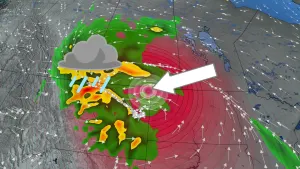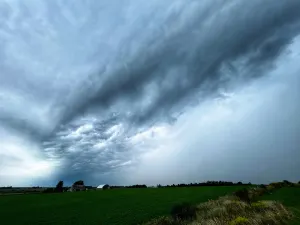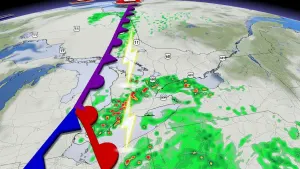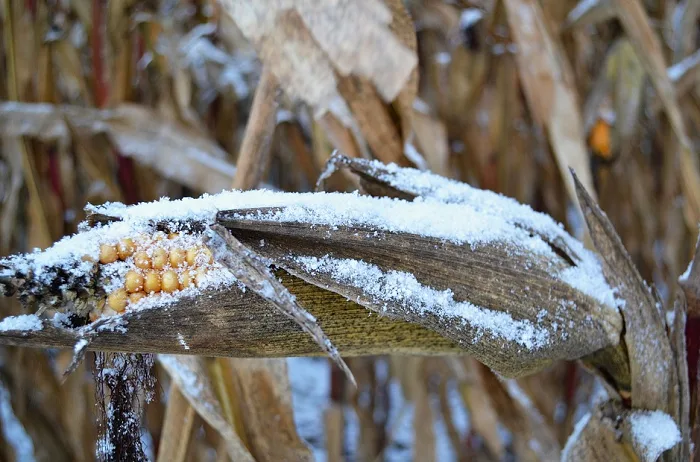
It has ‘not been the easiest harvest’ for Ontario corn farmers
How an early season snowfall is impacting some of Ontario’s corn harvest
It began in a cornfield.
The wind blew through the browned stalks, carrying with it tiny grains of snow that had begun to build-up on the ground and on golden cobs that poked out of once-green protective sheaths on corn plant leaves.
The valuable cobs had not yet been harvested. That's when I realized I had no idea how farmers dealt with early-season snow.
How did an early snowfall affect harvest? Did the farmers leave the corn out there and write-off their losses? Did they have other methods to pull the crop off the field despite the snow? How did the corn get off the field and into the tens of thousands of products that we use every day?
I was determined to find out.
Thanks to Twitter and some fans of mine, I was introduced to Scott Timmings of TimStar Farms and on a warm, dry day in November, I headed out to Rockwood to find out how farmers dealt with the unusual weather.
RELATED: Millions of acres of Canadian canola freeze, compounding 'harvest from hell'
I arrived in a pall of dust that blew up from around the massive tires of the combine as its driver, Grant Taylor, swung it back and forth through the corn stalks of the field. The snow that had fallen earlier in the month had melted away and now the ground was dry enough to get the machine onto the field with little chance of getting it stuck in the mud.
As Taylor continued his harvest, I asked Timmings what would happen if the fields were still covered in snow. He explained that, in farming, it’s all about the water -- whether it’s in the plant or on the ground.
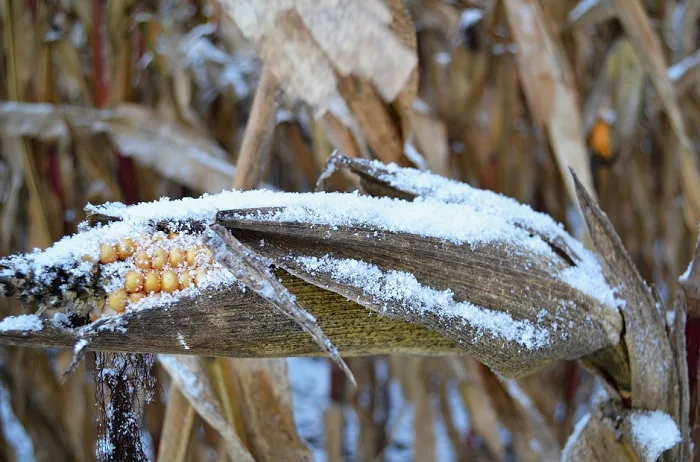
Image courtesy: Pixabay.
“There’s a moisture level that’s considered dry and most producers try and harvest around that to minimize costs of drying,” he told me.
This year hadn’t been easy.
“We had a bit of a challenging spring, a bit wetter than usual and not a lot of sunny days in between the rain, the field didn’t dry out that quickly, so we had delayed planting,” he added. “So we’re seeing the delayed planting combined with a cooler summer and wet harvest weather, so in general the corn moistures are higher than on an average year so it takes a lot of fuel to dry and you're trucking a lot of water off the field.”
Drying? Hold on a second.
I’d always thought that farmers just pulled the corn off the fields and shipped it off to the grocery store. Timmings explained that it’s just not that simple. Crops are required to have a specific moisture content to be useful to secondary producers. For corn, it’s around 15.5 per cent and that meant that if the corn was too wet, farmers need to dry it out using expensive fossil fuels which take time and money, neither of which farmers have in great abundance. Too dry, and the crop is worth less than what it could have been.
All of this means that the weather throughout the year is critical.
A late spring plant meant the corn wasn’t fully mature when harvest time rolled around and it wouldn’t have had the time to dry on the field. When there's early snow in the fall the combine harvester isn’t able to get on the field and harvest at the optimum time.
I wanted to get on the combine to see exactly how harvesting was done, so Timmings flagged Tayor down and I clambered aboard the giant machine. I’d never been this close to farming equipment (I grew up and live in Toronto; I’m very much a city boy) so the sheer scale of the machine was overwhelming. Beside it, another vehicle comprised of a tractor and what looked to be a modified truck trailer waited beside it. This, as I found out later, was how they got vast amounts of corn off the field as efficiently as possible.
Taylor laughed at my amazement and then proceeded to show me how the two vehicles made a dance of harvesting.
The combine rumbled to life and we plowed into the corn a lot faster than I thought we’d go. I didn’t even cut my grass at the speed Taylor was moving. Huge cone-like appendages on the front of the vehicle slipped between the rows of corn and directed each plant into the mechanical maw beneath the driver’s compartment so fast, I could barely see the individual cobs bounce away from the parent plant. Behind us, the “tank” filled rapidly with a golden avalanche of individual kernels sheared away from the cobs by the digestive system of the combine. Only the kernels were kept, the rest of the plant spewed out the back and onto the ground, eventually to be plowed under the soil as fertilizer for next year’s crops.
There seemed no way that such a technological brute would even be slowed down in the slightest by snow.
Taylor explained where I was wrong: “If you want to combine corn with snow on the ground, the snow on the ground isn't the issue, it’s the snow on the cobs and plants that are going into the combine. It heats up and creates slush in the machine. The corn just flies out the back, as opposed to staying in the tank where we want it, and we’re just spitting money on the ground.”
As if to prove his point, his partner in the harvest raced her tractor/truck around a corner and caught up with us. With a deft touch of a few buttons, Taylor swung an arm-like appendage out from the combine and with another, the “tank” behind us emptied in a matter of minutes, another golden avalanche, this time into the vehicle that now kept perfect pace with us.
As the other vehicle pulled away, its hopper full, I asked Taylor what the optimum weather conditions were for harvesting. His reply now made a lot more sense to me.
“The snow will restrict you a lot more than rain,” he explained.
“But that being said, the combine is great on the dirt, but the trucks aren’t great on the dirt; if you can’t get the trucks in and out, you might as well not be out here combining because you’re going to be stopped pretty quick if you can’t get it away.”
A few minutes later, my time in the massive machine done, I waved goodbye to Grant as the reddish light of the setting sun spilled over the golden field. The combine pulled away from me, the dust of its passage momentarily obscuring the light. They’d keep going well into the night, the work lit by floodlights and helped by modern technology. The snow was on its way again soon and dry days were in short supply.
As I walked across the field back towards my vehicle, the remains of hundreds of corn plants that had passed through the combine crunching under my feet, Scott’s words echoed in my head, “It’s not been the easiest harvest, but we’re getting along.”
For once, I hoped that I wasn’t going to be out chasing active weather anytime soon.







